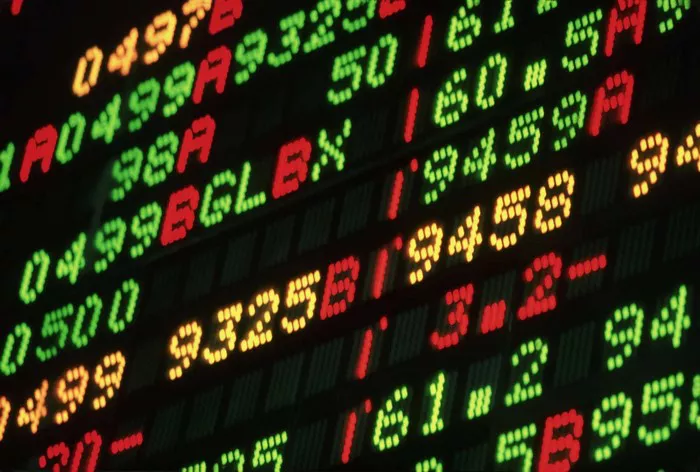The S&P 500 future symbol is a critical component of the financial markets, representing the futures contracts linked to the performance of the S&P 500 index. These contracts are widely used by traders and investors for various purposes, including speculation, risk management, and portfolio diversification.
Understanding the S&P 500 Future Symbol
The S&P 500 future symbol serves as a unique identifier for futures contracts that track the movements of the S&P 500 index. This index is one of the most closely watched benchmarks in the financial world, comprising 500 of the largest publicly traded companies in the United States. S&P 500 futures allow market participants to gain exposure to the overall performance of these companies without the need to buy individual stocks.
The Significance of the S&P 500 Future Symbol
The S&P 500 future symbol plays a pivotal role in the world of finance for several reasons:
a. Market Benchmark: The S&P 500 index is considered a barometer of the U.S. stock market’s health and performance. As such, S&P 500 futures are used by traders and investors to gauge the overall direction of the market.
b. Portfolio Diversification: S&P 500 futures provide an efficient means of diversifying investment portfolios. By trading these contracts, investors can gain exposure to a broad range of sectors and industries represented within the index.
c. Risk Management: Institutional investors, such as pension funds and asset managers, use S&P 500 futures to hedge their equity portfolios against adverse market movements. This strategy allows them to protect their investments from potential losses.
d. Speculation: Traders often engage in speculation using S&P 500 futures. They take positions based on their outlook for the index’s future performance, aiming to profit from price fluctuations.
Contract Specifications of S&P 500 Futures
a. Underlying Asset: The underlying asset of S&P 500 futures is the S&P 500 index itself. The index represents the collective performance of the 500 largest publicly traded companies in the U.S.
b. Contract Size: S&P 500 futures contracts are typically quoted in terms of a monetary value per index point. For example, a contract might be valued at $250 per index point. This means that for every point the index moves, the contract’s value changes by $250.
c. Contract Months: S&P 500 futures contracts have specific delivery months. The most actively traded contracts usually expire in March, June, September, and December, allowing traders to choose contracts that align with their trading strategies.
d. Tick Size: The tick size represents the minimum price movement for the futures contract. For S&P 500 futures, the tick size is typically 0.25 index points.
e. Settlement: Settlement of S&P 500 futures contracts can occur through cash settlement. This means that at contract expiration, the profits or losses are settled in cash rather than through physical delivery of the index’s constituent stocks.
f. Margin Requirements: Margin requirements for S&P 500 futures contracts are set by the exchange where the contracts are traded. Traders are required to maintain a certain amount of margin in their trading accounts to cover potential losses.
Trading Strategies for S&P 500 Futures
Trading S&P 500 futures offers a wide range of strategies for participants:
a. Directional Trading: Traders can take long positions (buy) if they expect the S&P 500 index to rise or short positions (sell) if they anticipate a decline. This strategy allows traders to profit from their market outlook.
b. Spread Trading: Spread trading involves simultaneously buying and selling different S&P 500 futures contracts, often with varying expiration dates. Traders aim to profit from the price difference between the contracts.
c. Hedging: Institutional investors use S&P 500 futures for hedging purposes. They can hedge against potential market declines by taking short positions in these contracts to offset losses in their equity portfolios.
d. Options Strategies: Options on S&P 500 futures provide various strategies, such as covered calls and protective puts, to manage risk and enhance returns.
e. Arbitrage Opportunities: Arbitrageurs seek to profit from price discrepancies between S&P 500 futures and the underlying cash index. They execute simultaneous buy and sell orders to capture risk-free profits.
Role of the S&P 500 Future Symbol in Market Analysis
The S&P 500 future symbol is often referenced in market analysis and financial news. Here’s how it is used:
a. Market Sentiment Indicator: The direction of S&P 500 futures before the U.S. stock market opens can serve as an early indicator of market sentiment and potential price movements for the trading day.
b. Global Market Influence: Due toits status as a global benchmark, the performance of S&P 500 futures can influence other equity markets around the world. It is closely watched by international investors and traders.
c. Volatility Gauge: S&P 500 futures can provide insights into market volatility. Rising volatility in these futures contracts may indicate increased uncertainty and potential market turbulence.
Conclusion
The S&P 500 future symbol is a fundamental component of the financial markets, representing futures contracts linked to the performance of the S&P 500 index. These contracts offer investors and traders diverse opportunities for speculation, risk management, and portfolio diversification. Understanding the contract specifications, trading strategies, and the role of the S&P 500 future symbol in market analysis is crucial for those looking to participate in this dynamic segment of the financial world.


